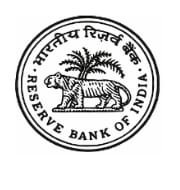RBI keeps repo rate unchanged at 6%
The six member Monetary Policy Committee (MPC) of Reserve Bank of India (RBI) has decided to maintain status quo in policy rates by keeping repo rate unchanged at 6.0% under liquidity adjustment facility. It was RBI’s fourth bimonthly policy review for financial year 2017-18.
The decision of MPC was consistent with neutral stance of monetary policy in consonance with objective of achieving medium-term inflation target of 4% within a band of +/- 2%, while supporting growth.
Policy Rates
Repo rate: It is rate at which RBI lends to its clients generally against government securities. It was unchanged at 6%.
Reverse Repo Rate: It is rate at which banks lend funds to RBI. It was unchanged at 5.75%.
Marginal Standing Facility (MSF) Rate: It is rate at which scheduled banks can borrow funds overnight from RBI against government securities. It is very short term borrowing scheme for scheduled banks. It was unchanged at 6.25%.
Bank Rate: It is rate charged by central bank for lending funds to commercial banks. It was unchanged 6.25%. It influences lending rates of commercial banks. Higher bank rate will translate to higher lending rates by banks.
Cash Reserve Ratio (CRR): It is amount of funds that banks have to keep with RBI. It was unchanged at 4%. The RBI uses CRR to drain out excessive money from system.
Statutory Liquidity Ratio (SLR): It was changed to 19.5% from 20%. It is amount that banks have to maintain a stipulated proportion of their net demand and time liabilities (NDTL) in form of liquid assets like cash, gold and unencumbered securities, treasury bills, dated securities etc.
Key Highlights of 4th bi-monthly policy
RBI has indicated rise in inflation and is expected to rise from its current level and range between 4.2-4.6% in second half of this year. It also has indicated a fall in GVA (Gross Value Addition) growth rate. The projection of real GVA growth for 2017-18 has been revised down to 6.7% from August 2017 projection of 7.3%.
According to RBI, various structural reforms introduced in recent period will likely be growth augmenting over medium- to long-term by improving business environment, enhancing transparency and increasing formalisation of economy.
Month: Current Affairs - October, 2017


